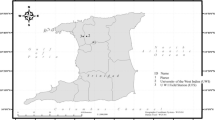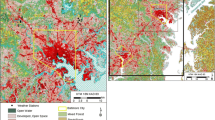Summary
Most GCMs indicate distinct elevational signals in temperature response to global warming, both in the free-air and at the surface, although modelled changes are spatially variable, in magnitude and in sign. In this study, daily climate observations (1968–1995) from two sites in northern England, representative of upland and lowland environments, are used to derive a regionally representative lapse rate. The lapse rates of daily maximum and minimum temperatures show strong seasonal and diurnal patterns, and relationships with synoptic conditions, classified using the Lamb classification. Synoptic types with westerly components show the most rapid decrease of temperature with elevation. Lapse rates are also steeper when there is a strong altitudinal increase in cloud cover, decrease in sunshine duration, or strong wind shear.
Lapse rates are becoming steeper by day but weaker at night (p < 0.1%). Such changes occur within most synoptic types, and there are not many statistically significant changes in relative airflow frequencies. Weak relationships exist between measurements of the NAO and lapse rates, but within airflow-type modification is also influential, being connected with changes in SSTs to the west of the U.K. Correlations between mean monthly lapse rates and SSTs vary spatially. Low SSTs in the north and high SSTs in the south of the region encourage steep daytime lapse rates, implying a steeper lapse rate under a stronger meridional temperature gradient. At night the opposite relationship holds. Over time there has been strengthening in the meridional SST gradient to the west of the U.K., confirmed by analysis of a SST data set from CRU (1968–1995). This correlates with the increased diurnal lapse rate signal. Changes in upland temperatures in northern England are dependent on variable lapse rate modification for individual synoptic types, in this case influenced by upwind SSTs and their meridional gradient. Thus different mountain ranges will react in contrasting ways to global warming.
Similar content being viewed by others
Author information
Authors and Affiliations
Additional information
Received July 24, 2000 Revised November 3, 2000
Rights and permissions
About this article
Cite this article
Pepin, N. Lapse rate changes in northern England. Theor Appl Climatol 68, 1–16 (2001). https://doi.org/10.1007/s007040170049
Issue Date:
DOI: https://doi.org/10.1007/s007040170049




